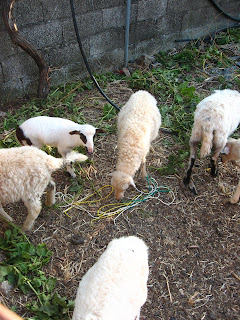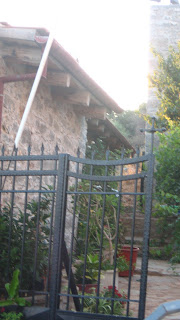7.25.10
About a year ago Jon Newman suggested that I try rock climbing. Ever since then, I've been practicing regularly at the Cornell Rock Climbing Wall with friends and Jon took me outdoor rock climbing when I went to visit him in May. If I didn't mention it already, Giannis is a member of a local rescue team. Besides fighting forest/brush fires, he often saves hikers and farmer who get lost in the Cretan cliffs. He trains for these rescue missions at a rock climbing wall/gym in Agios Nikalos. The gym is owned by a fellow rescue team member named Dimitri, and his son Nektarios, is one of the top rock climbers for his age group (14 years old) in Greece. Giannis invited me to go climbing with Dimitri and Nektarios since they would be practicing for one of Nektarios' upcoming competitions. We went to a cliff near the city of Ierapetra on the southern coast of Crete.

The cliff is not too far from the coast near Ierapetra. 'Petra' is the Greek word for rock so I wonder if this is how the place got its name.

I outlined my route in green. I had forgotten to pack my climbing shoes and was only able to get up to the red dot wearing my sneakers.

One of my favorite experiences in Crete was going hiking. The land was do dry and harsh but the smell of herbs was amazing. I would brush up against a wild sage plant (shown here) and inhale the amazing aroma of this plant. The same was true for wild oregano and thyme.
View of the cliff up close. We could also boulder along the bottom portion. The rock had lots of pockets that were perfect hand holds. Parts of it were a little rough but most was smooth and didn't cut up your hands too much.
Climbing was an amazing experience but I still had 30% more of the route to complete before getting to the end. I will have to try again (maybe next summer) and also remember to pack my climbing gear.

























































